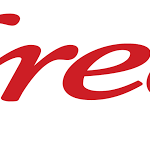When I was 13, I bought my very first computer, an Apple IIe for $2,000, which would be about $4,550 in 2017 money. You can buy a nice MacBook Air for a little over $1,000.
In 2008, I was reviewing the 401(k) plan of a soon to be defunct mattress retailer that was on an insurance platform that claimed to be on their “side”. A copy of the 1995 contract that actually expired in 2001 charged the plan sponsor 267 basis points in fees. Obviously for a plan that had almost $4 million in assets, that was a lot of money. In 1995 when daily 401(k) plans were the exception and not the norm, 267 basis points was reasonable. In 2008, that was outright theft.
Since 1995, fees for daily recordkeeping plans and the margins in 401(k) administration have fallen in price as technology and economies of scale reduced costs. The advent of revenue sharing fees where mutual fund companies kick back fees to the third party administration (TPA) firm helped as well. Since TPA firms had no requirement to breakout revenue sharing fees, the true costs of plan administration was actually masked to the plan sponsor and the plan participants.
With the advent of fee disclosure regulations in 2012, the mask of revenue sharing has been taken off and that revenue share subsidy has been exposed as another cost of plan administration that is a sticker shock to plan sponsors when they find out about it. Hungry financial advisors and competing TPAs have used that opportunity to recruit new plan sponsor clients by promising lower fees with the use of lower fee mutual funds and/or exchange traded funds (ETFs).
The shrinking margins thanks to fee disclosure, competition, and the end of a lot of revenue sharing is good for plan sponsors and plan participants. However, there is a cost n the industry as consolidation in the business has occurred, which in the end may increase fees when there is less competition around. There hasn’t been a race to zero as plan sponsors haven’t sought out plan providers who charge the lowest fee, yet providers are doing more work and making less money that they did 20 years ago. There is a cost for lower fees, but only the plan providers see it.







